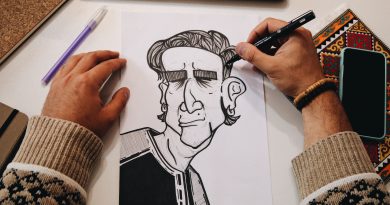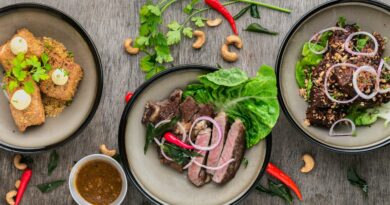Photo by AbsolutVision on Unsplash
Em 1901, David Hänig publicou uma pesquisa que levou ao que conhecemos hoje como mapa do paladar: uma ilustração que divide a língua em quatro áreas separadas. Desde então, a teoria foi publicada em livros didáticos e jornais. Há apenas um problema: o mapa está errado. Então, como equívocos como esse se espalham e o que torna um fato falso tão fácil de acreditar? (Fonte: TED.COM)
| Audio | |
|---|---|
Normal | Slow |
| English Transcript | Tradução |
| In 1901, David Hänig published a paper that forever changed our understanding of taste. | Em 1901, David Hänig publicou um artigo que mudou para sempre nossa compreensão do paladar. |
| His research led to what we know today as the taste map: an illustration that divides the tongue into four separate areas. | Sua pesquisa levou ao que conhecemos hoje como mapa gustativo: uma ilustração que divide a língua em quatro regiões distintas. |
| According to this map, receptors at the tip of our tongues capture sweetness, bitterness is detected at the tongue's base, and along the sides, receptors capture salty and sour sensations. | De acordo com esse mapa, receptores na ponta da língua captam o sabor doce; o sabor amargo é detectado no fundo da língua; nas laterais, receptores captam os sabores salgado e azedo. |
| Since its invention, the taste map has been published in textbooks and newspapers. | Desde sua invenção, o mapa gustativo tem sido publicado em livros didáticos e jornais. |
| The only problem with this map, is that it's wrong. | O único problema com esse mapa é que ele está errado. |
| In fact, it's not even an accurate representation of what Hänig originally discovered. | Nem mesmo se trata de uma representação precisa da descoberta original de Hänig. |
| The tongue map is a common misconception, something widely believed but largely incorrect. | O mapa gustativo é um equívoco comum, algo em que se acredita amplamente, mas que é incorreto. |
| So where do misconceptions like this come from, and what makes a fake fact so easy to believe? | Então de onde surgem esses equívocos, e o que torna uma informação falsa tão facilmente aceitável? |
| It's true that the tongue map's journey begins with David Hänig. | É verdade que a jornada do mapa da língua inicia com David Hänig. |
| As part of his dissertation at Leipzig University, Hänig analyzed taste sensitivities across the tongue for the four basic flavors. | Como parte de sua dissertação na Universidade de Leipzig, Hänig analisou a sensibilidade na língua aos quatro sabores básicos. |
| Using sucrose for sweet, quinine sulfate for bitter, hydrochloric acid for sour, and salt for salty, Hänig applied these stimuli to compare differences in taste thresholds across a subject's tongue. | Usando sacarose para doce, sulfato de quinina para amargo, ácido clorídrico para azedo e sal para salgado, Hänig aplicou esses estímulos para comparar diferenças nos limiares de cada sabor em diferentes regiões da língua dos pacientes. |
| He hoped to better understand the physiological mechanisms that affected these four flavors, and his data suggested that sensitivity for each taste did in fact vary across the tongue. | Ele esperava compreender melhor os mecanismos fisiológicos que afetavam esses quatro sabores, e os dados sugeriam que a sensibilidade para cada sabor, de fato, variava na língua. |
| The maximum sensation for sweet was located at the tongue's tip; bitter flavors were strongest at the back; salt was strongest in this area, and sour at the middle of the tongue's sides. | A sensibilidade máxima a sabores doces estava localizada na ponta da língua; sabores amargos eram mais fortes no fundo; salgados eram mais intensos nesta região, e azedos nas laterais da região central da língua. |
| But Hänig was careful to note that every sensation could also be tasted across the tongue, and that the areas he identified offered very small variations in intensity. | Mas Hänig foi cuidadoso ao salientar que todos os sabores também podiam ser sentidos em outras regiões da língua, e as regiões identificadas apresentavam somente pequenas variações em intensidade. |
| Like so many misconceptions, the tongue map represents a distortion of its original source, however the nature of that distortion can vary. | Assim como muitos equívocos, o mapa da língua representa uma distorção da fonte original, embora a natureza dessa distorção possa variar. |
| Some misconceptions are comprised of disinformation, false information intentionally designed to mislead people. | Alguns equívocos abrangem a desinformação: informações falsas destinadas intencionalmente a enganar pessoas. |
| But many misconceptions, including the tongue map, center on misinformation, false or misleading information that results from unintentional inaccuracy. | Mas muitos equívocos, inclusive o mapa da língua, focam a desinformação: informação falsa ou enganosa resultante de erro não intencional. |
| Misinformation is most often shaped by mistakes and human error, but the specific mistakes that lead to a misconception can be surprisingly varied. | A desinformação decorre geralmente de enganos e erros humanos, mas os erros específicos que levam a equívocos podem variar de forma surpreendente. |
| In the case of the tongue map, Hänig's dissertation was written in German, meaning the paper could only be understood by readers fluent in German and well versed in Hanig's small corner of academia. | No caso do mapa da língua, a dissertação de Hänig estava escrita em alemão e só podia ser compreendida por leitores fluentes em alemão e com conhecimentos específicos da linha de pesquisa de Hänig. |
| This kicked off a game of telephone that re-shaped Häing's research every time it was shared with outside parties. | Isso deu origem a um "telefone sem fio", que distorcia a pesquisa de Hänig toda vez que a compartilhavam. |
| Less than a decade after his dissertation, newspapers were falsely insisting that experiments could prove sweetness was imperceptible on the back of the tongue. | Menos de uma década após a dissertação, jornais insistiam falsamente que os experimentos podiam provar que o sabor doce era imperceptível no fundo na língua. |
| The second culprit behind the tongue map's spread were the images that Hänig's work inspired. | O segundo culpado pela propagação do mapa gustativo foram as imagens inspiradas pelo trabalho de Hänig. |
| In 1912, a rough version of the map appeared in a newspaper article that cautiously described some of the mysteries behind taste and smell research. | Em 1912, uma versão aproximada do mapa apareceu em um artigo de jornal que descrevia com cuidado alguns dos mistérios acerca de pesquisas relacionadas ao paladar e ao olfato. |
| Featuring clear labels across the tongue, the article's illustration simplified Hänig's more-complicated original diagrams. | Com etiquetas na língua, a ilustração do artigo simplificava os diagramas originais e mais complexos de Hänig. |
| Variations of this approachable image became repeatedly cited, often without credit or nuanced consideration for Hänig's work. | Variações dessa imagem mais acessível passaram a ser citadas repetidamente, muitas vezes sem créditos nem consideração aos detalhes do trabalho de Hänig. |
| Eventually this image spread to textbooks and classrooms as a purported truth of how we experience taste. | Por fim, essa imagem se propagou por livros didáticos e salas de aula como uma suposta verdade de como sentimos o paladar. |
| But perhaps the factor that most contributed to this misconception was its narrative simplicity. | Mas o fator que mais contribuiu para esse equívoco talvez tenha sido a simplicidade de sua narrativa. |
| In many ways, the map complements our desire for clear stories about the world around us, a quality not always present in the sometimes-messy fields of science. | De muitas maneiras, o mapa satisfaz nosso desejo por histórias claras sobre o mundo ao nosso redor, uma qualidade nem sempre presente nas áreas às vezes complexas da ciência. |
| For example, even the number of tastes we have is more complicated than Hänig's work suggests. | Por exemplo, até mesmo o número de sabores que sentimos é mais complexo do que sugeriu Hänig. |
| Umami, also known as savory, is now considered the fifth basic taste, and many still debate the existence of tastes like fatty, alkaline, metallic, and water-like. | Umami, também conhecido como saboroso, é agora considerado o quinto sabor básico, e muitos ainda debatem sobre a existência de sabores como gorduroso, alcalino, metálico e aquoso. |
| Once we hear a good story, it can be difficult to change how we see that information, even in the face of new evidence. | Quando ouvimos uma boa história, pode ser difícil mudar nossa maneira de compreender aquela informação, mesmo diante de novas evidências. |
| So, next time you see a convenient chart or read a surprising anecdote, try to maintain a healthy skepticism, because misconceptions can leave a bitter taste on every part of your tongue. | Então, da próxima vez que vir um gráfico conveniente ou ler um relato fascinante, tente manter um ceticismo saudável, porque equívocos podem deixar um sabor amargo em todas as partes da língua. |
Contagem de palavras
A tabela abaixo exibe as palavras encontradas neste vídeo bem como o número de vezes em que aparecem.
Veja também: Para que serve esta tabela?
| Freq. | Palavra | Freq. | Palavra | Freq. | Palavra |
| 44 | the | 21 | of | 17 | that |
| 17 | a | 16 | in | 14 | tongue |
| 14 | and | 12 | to | 10 | taste |
| 10 | map | 10 | for | 8 | this |
| 7 | was | 6 | is | 6 | hanig's |
| 6 | hanig | 6 | at | 5 | we |
| 5 | misconceptions | 5 | but | 5 | across |
| 4 | so | 4 | many | 4 | like |
| 4 | his | 4 | can | 4 | be |
| 4 | as | 3 | work | 3 | with |
| 3 | what | 3 | were | 3 | tongue's |
| 3 | sour | 3 | research | 3 | our |
| 3 | or | 3 | on | 3 | misconception |
| 3 | it's | 3 | its | 3 | information |
| 3 | four | 3 | flavors | 3 | fact |
| 3 | every | 3 | even | 3 | dissertation |
| 3 | could | 3 | bitter | 2 | vary |
| 2 | variations | 2 | tip | 2 | time |
| 2 | these | 2 | than | 2 | textbooks |
| 2 | tastes | 2 | sweetness | 2 | sweet |
| 2 | strongest | 2 | spread | 2 | some |
| 2 | small | 2 | sides | 2 | shaped |
| 2 | sensation | 2 | see | 2 | salty |
| 2 | salt | 2 | receptors | 2 | published |
| 2 | part | 2 | paper | 2 | original |
| 2 | only | 2 | often | 2 | not |
| 2 | newspapers | 2 | most | 2 | more |
| 2 | mistakes | 2 | misinformation | 2 | map's |
| 2 | it | 2 | image | 2 | illustration |
| 2 | how | 2 | he | 2 | german |
| 2 | from | 2 | false | 2 | distortion |
| 2 | david | 2 | complicated | 2 | clear |
| 2 | capture | 2 | by | 2 | behind |
| 2 | basic | 2 | back | 2 | areas |
| 2 | an | 2 | also | 1 | your |
| 1 | you | 1 | wrong | 1 | written |
| 1 | world | 1 | without | 1 | widely |
| 1 | where | 1 | well | 1 | ways |
| 1 | water | 1 | very | 1 | version |
| 1 | versed | 1 | varied | 1 | using |
| 1 | us | 1 | university | 1 | unintentional |
| 1 | understood | 1 | understanding | 1 | understand |
| 1 | umami | 1 | try | 1 | truth |
| 1 | true | 1 | tongues | 1 | today |
| 1 | thresholds | 1 | telephone | 1 | tasted |
| 1 | surprisingly | 1 | surprising | 1 | sulfate |
| 1 | suggests | 1 | suggested | 1 | sucrose |
| 1 | subject's | 1 | story | 1 | stories |
| 1 | stimuli | 1 | still | 1 | specific |
| 1 | source | 1 | sometimes | 1 | something |
| 1 | smell | 1 | skepticism | 1 | since |
| 1 | simplified | 1 | simplicity | 1 | shared |
| 1 | separate | 1 | sensitivity | 1 | sensitivities |
| 1 | sensations | 1 | second | 1 | science |
| 1 | savory | 1 | rough | 1 | results |
| 1 | represents | 1 | representation | 1 | repeatedly |
| 1 | readers | 1 | read | 1 | re |
| 1 | quinine | 1 | quality | 1 | purported |
| 1 | prove | 1 | problem | 1 | present |
| 1 | physiological | 1 | perhaps | 1 | people |
| 1 | parties | 1 | outside | 1 | originally |
| 1 | once | 1 | offered | 1 | off |
| 1 | number | 1 | nuanced | 1 | now |
| 1 | note | 1 | next | 1 | newspaper |
| 1 | new | 1 | nature | 1 | narrative |
| 1 | mysteries | 1 | misleading | 1 | mislead |
| 1 | middle | 1 | metallic | 1 | messy |
| 1 | mechanisms | 1 | meaning | 1 | maximum |
| 1 | makes | 1 | maintain | 1 | located |
| 1 | less | 1 | leipzig | 1 | led |
| 1 | leave | 1 | lead | 1 | largely |
| 1 | labels | 1 | known | 1 | know |
| 1 | kicked | 1 | journey | 1 | invention |
| 1 | into | 1 | intentionally | 1 | intensity |
| 1 | inspired | 1 | insisting | 1 | incorrect |
| 1 | including | 1 | inaccuracy | 1 | imperceptible |
| 1 | images | 1 | identified | 1 | hydrochloric |
| 1 | human | 1 | however | 1 | hoped |
| 1 | hear | 1 | healthy | 1 | have |
| 1 | has | 1 | haing's | 1 | good |
| 1 | game | 1 | forever | 1 | fluent |
| 1 | fifth | 1 | fields | 1 | featuring |
| 1 | fatty | 1 | falsely | 1 | fake |
| 1 | factor | 1 | face | 1 | experiments |
| 1 | experience | 1 | existence | 1 | example |
| 1 | evidence | 1 | eventually | 1 | error |
| 1 | easy | 1 | each | 1 | do |
| 1 | divides | 1 | disinformation | 1 | discovered |
| 1 | difficult | 1 | differences | 1 | did |
| 1 | diagrams | 1 | detected | 1 | desire |
| 1 | designed | 1 | described | 1 | decade |
| 1 | debate | 1 | data | 1 | culprit |
| 1 | credit | 1 | corner | 1 | convenient |
| 1 | contributed | 1 | considered | 1 | consideration |
| 1 | comprised | 1 | complements | 1 | compare |
| 1 | common | 1 | come | 1 | classrooms |
| 1 | cited | 1 | chart | 1 | changed |
| 1 | change | 1 | center | 1 | cautiously |
| 1 | case | 1 | careful | 1 | bitterness |
| 1 | better | 1 | believed | 1 | believe |
| 1 | begins | 1 | been | 1 | because |
| 1 | became | 1 | base | 1 | article's |
| 1 | article | 1 | around | 1 | area |
| 1 | are | 1 | approachable | 1 | applied |
| 1 | appeared | 1 | anecdote | 1 | analyzed |
| 1 | always | 1 | along | 1 | alkaline |
| 1 | after | 1 | affected | 1 | acid |
| 1 | accurate | 1 | according | 1 | academia |
| 1 | about |










